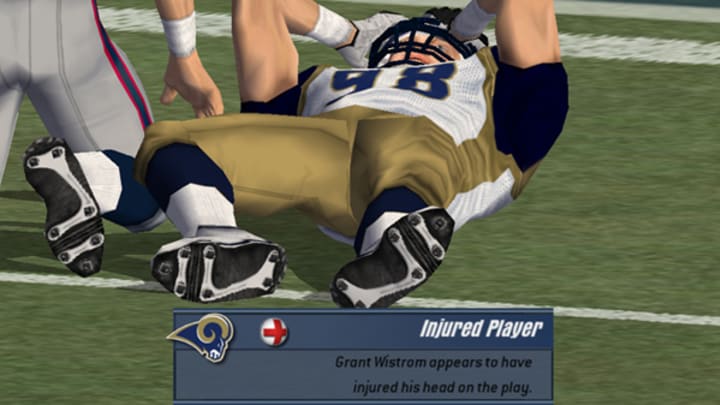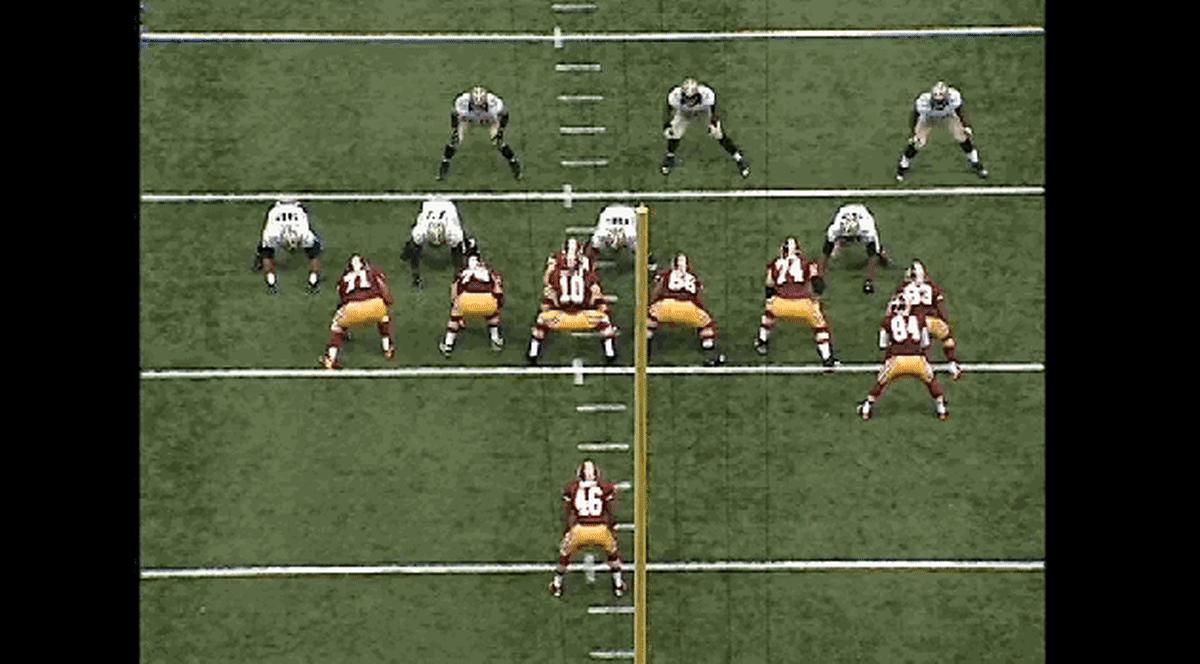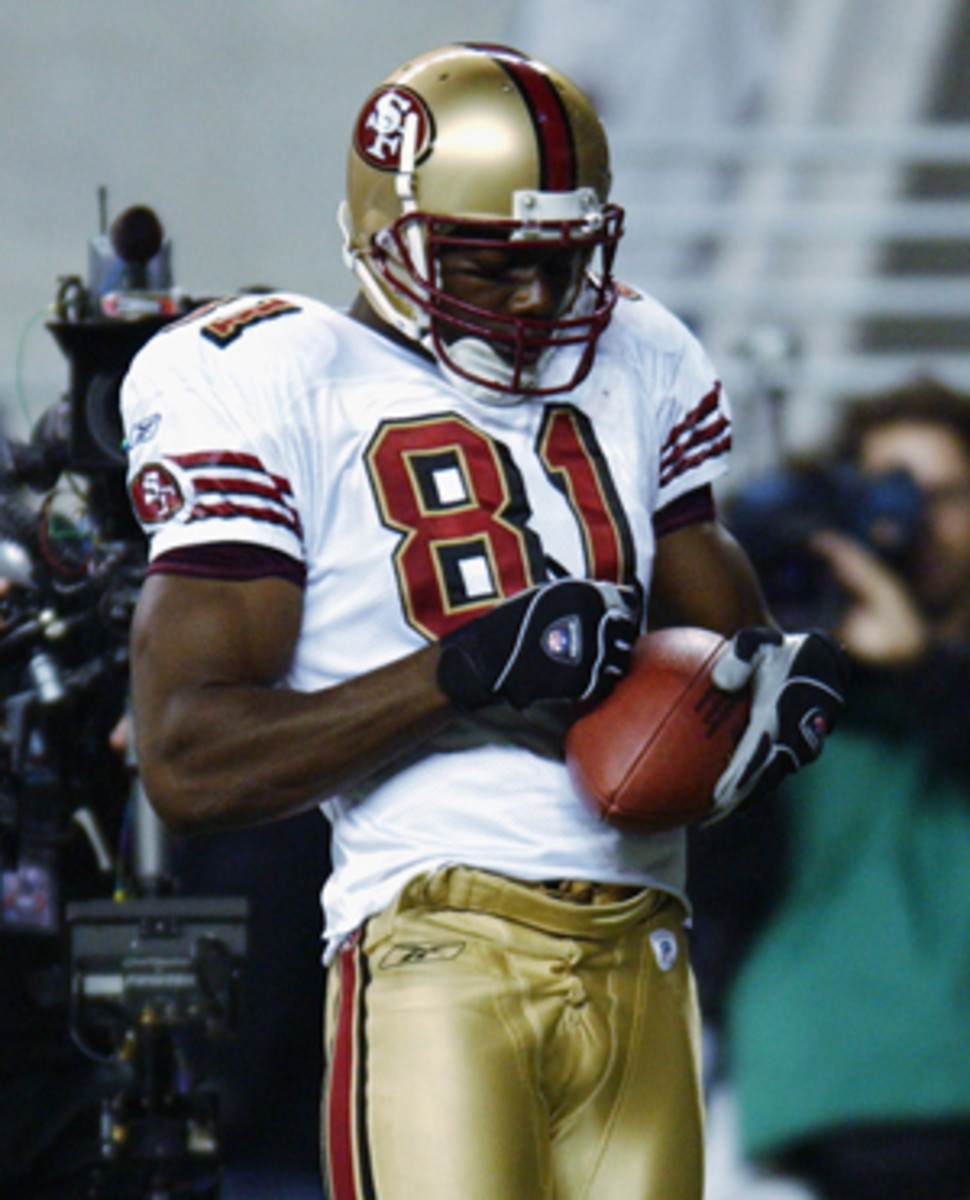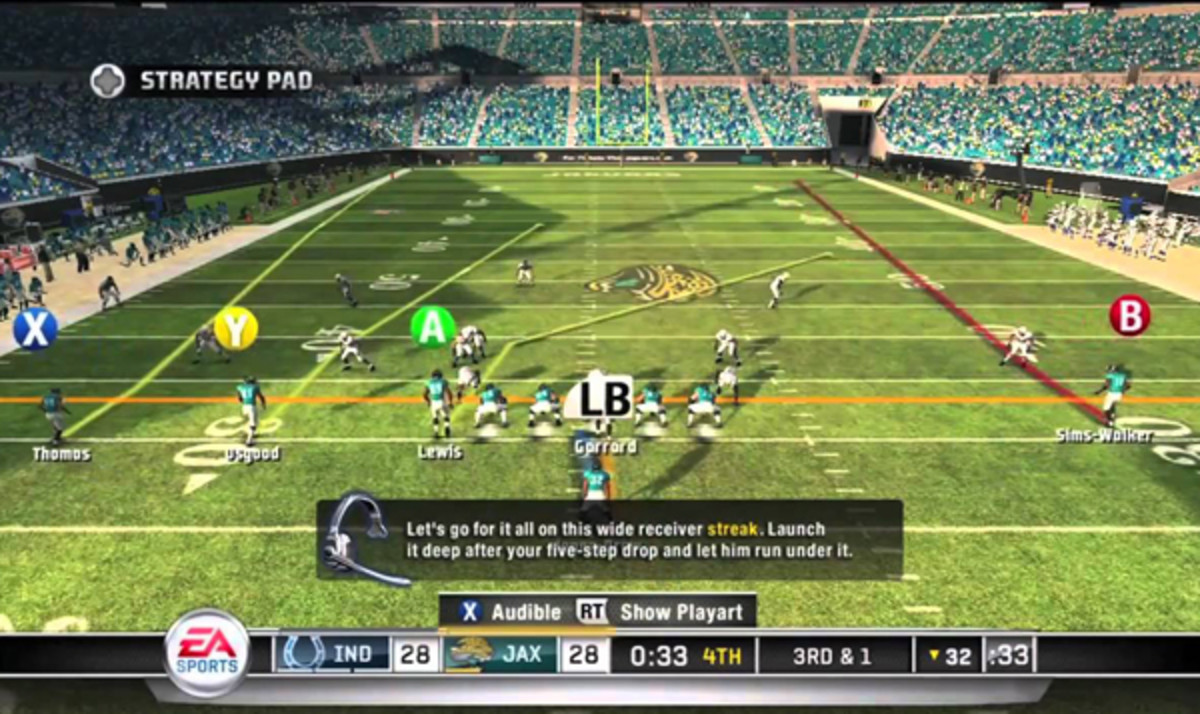It's Not In the Game: Eight Features the NFL Made EA Sports Remove from "Madden"


There are a staggering number of steps involved in bringing a video game with the sophistication and legacy of Madden to market, and it shouldn't surprise you to learn that getting sign-off from the NFL is one of them. Even less surprising is the fact that the league has over the years insisted that EA remove existing features that fans loved, or planned elements that would have been enthusiastically received. It's the league's shield on the cover, so they get a say.
Extra Mustard reached out to a handful of former and current Madden producers to learn more about the role the so-called No Fun League (the Nixing Features League? Anyone?) has played in shaping the Madden franchise over the past 25 years. Some producers were measured in their assessment. Said one, "The ownership of the project was very much with EA, but the NFL does have approval rights, as is true of any company that works with licensors. This is not unique to Madden." Others took a stronger position, such as the producer who told us, “The NFL is ultra-conservative and made us change or remove things all the time."
Whatever the case, the league clearly has influence over the contents of the game—and as these eight example show, it doesn't hesitate to use it.
THE AMBULANCE
The famed Madden ambulance made its debut in Madden '92, and with its proclivity for running over players en route to retrieving injured stars, it was an immediate fan favorite. Over time the NFL's own enthusiasm for the emergency vehicle waned, and it eventually became the first in-game element that the NFL asked to have removed. It last appeared in Madden NFL 2001.
“In retrospect, it probably wasn’t the most tasteful thing to celebrate a major injury," says one producer. "And this was in the era before concussion awareness that we have today." Even so, the EA team pushed to revive the beloved feature. "We asked NFL every year if they were ok with bringing the ambulance back," says a different producer. "They said, 'We know it's your legacy, but not comfortable with it.'"
Eventually the two parties compromised on having a cart that drove onto the field, with the league feeling that was more authentic. But even that addition came with caveats: "They did not want to see a player strapped to a backboard, motionless," says the second producer. "That was a hard restriction, given to us in the mid-2000s. If a guy was carted off the field, he had to be moving around, not paralyzed."
ALL THINGS CONCUSSION
It wasn't difficult to see the rising tide of concussion issues in the mid-2000s, and everyone involved in the making of Madden—EA, the NFL, even John Madden himself—had thoughts on how to address it in the game. "We were already making changes to concussions—we wanted them to be more realistic," says a producer. "The NFL got wind of that, so we ended up working together. They provided us with concussion data so we could model the frequency of concussions in Madden after the real-life averages."
The language used when describing injuries—head or otherwise—also changed late in the last decade, as EA began using vaguer descriptions that better reflected the actual knowledge people would have of an injury moments after it occurred. "For awhile, the game would say, '[Your player] sprained his back, out for 6 weeks' two plays after he sustained the injury," recalls a producer. "But in real life guys don't get diagnosed until they go get an MRI, just like the NFL doesn't formally diagnose concussions at the game. So we adjusted the phrasing to say things like 'head injury' instead."
The producer doesn't remember if it was the NFL or John Madden himself who requested that change, but he did say that Madden was vocal about making adjustments as a result of increased concussion awareness, even going so far as to record new, more appropriate audio commentary. "John had his own concerns," says the producer, "so he asked us to change the lines he spoke in the game to be more sensitive to the issue."

HIT STICK VIOLENCE
The evolution of the Hit Stick wasn't unlike that of the ambulance: The NFL didn't pay it much attention when the tool was first added in Madden NFL 2005, but when it became a popular feature, the league began reviewing specific animations—and didn't like everything it saw. "If a player's head snapped back too sharply, we had have to change the animation to make it more … proper," says a producer. "We couldn't have animations that looked overly violent or caused injury to player."
DE-HELMETING
Helmet-popping tackles used to be a back-of-the-box staple back in the N64 and PS2 days, but they haven't been seen in Madden since 2006. Their disappearance was as much due to technical difficulties as to league displeasure.
"When the last console transition happened, with the switch from PS2 to PS3 and Xbox to Xbox 360, we completely rewrote the game. In the process, we literally lost the technology that allowed the helmet to pop off," says a producer. "A big part of the challenge was that we had to give a player hair when his helmet popped off, making the animation more complicated than it might seem. There were a lot of moving pieces involved, and it happened infrequently, so we just said, 'This isn't a priority'."
But when EA was settled into the new generation of consoles and tried to add the animation back into the game, the NFL put the kibosh on the plan. "The NFL was happy when we weren't able to include popping-off helmets following the console switch," says the producer. "That was a feature they never liked. A few years later we tried to add it back in, and they wouldn't let us."
FREEWHEELING OWNER MODE
As sports games have grown more powerful and sophisticated, developers have been able to offer gamers more options for customization. That's a good thing—being able to tweak even tiny aspects of the game boosts engagement and creates a richer experience for players. The downside? It may also yield seemingly inappropriate color combinations. So said the NFL, at least.
"One feature we added a number of years back was the ability to create a logo or customize a uniform," says a producer. "When it came to the uniforms, the NFL was particularly interested in making sure league policies were consistent. They said, 'We don't want to see the Oakland Raiders logo on a pink helmet'."
Subsequently, players using real NFL logos in the create-a-team mode had to adhere to a strict set of guidelines. Gamers wanting to cut loose with their color palettes had to use generic logos—chosen from a set that the NFL approved.
CELEBRATIONS

No surprise here. Celebrations were arguably the leading source of real-world NFL consternation before concussions came along and forced everyone to focus on something that was actually serious. Naturally, the league paid just as much attention to the celebrations in Madden, and saw to it that they complied with actual rules.
"The league's goal is to have Madden resemble an idealized real-world NFL game," says a producer. "That means virtual players have to abide by the same rules as real ones. They don't want celebrations that would draw a penalty in real life. Players, when they cross the goal line, can't go to ground to celebrate if they score on their feet, nor can they take their helmet off."
Which is to say nothing of the more elaborate—and authentic—celebration animations EA whipped up. "When T.O. and Chad Johnson were going nuts with celebrations and props, we lit up and made a lot of those animations," says the producer." We captured all of those."
The list of animations produced included signing a ball, pulling out a cell phone, pouring popcorn on your face, and punting the ball into the stands. In the end, they all wound up on the cutting room floor. Says a different producer, "The NFL got pretty mad at us, so we removed them all."
So while Madden NFL 25 includes celebrations like Alfred Morris and his home run swing, any theatrics that would draw a flag in real life have been 86ed.
LEVELING BYSTANDERS
The NFL's concerns about depicting violent contact doesn't just pertain to the athletes. In its pursuit of authenticity, EA continues to enhance the peripheral aspects of the game—for example, making the characters on the sidelines and in the crowd more lifelike and unique. Yet for every few steps forward, some backtracking needs to be done.
"For a few years, we had the ability for coaches to be taken out," says a producer. "If you ran out of bounds and hit the coach, he would fall over. Same for the guys holding the first-down sticks. Eventually we changed it so they would step out of the way—but that wasn't a mandate from the league."
The NFL did draw a line this year at the inadvertent bowling-over of some lower-profile members of the sideline population: photographers. "For Madden 25, we created animations of sports photographers being taken out by players who go hurtling out-of-bounds," says a different producer. "But we weren't able to include them in the final product. That wasn't an area of the game that the league wanted to highlight."
DYNAMIC ATTENDANCE (OR LACK THEREOF)
Seems that keeping the game faithful to the real-world product isn't always in the league's best interests. Being that both the developer and the league were ever striving for greater realism, EA added a logical feature for Madden 11: Dynamic attendance. With it, stadiums in the game would be as populated as their real-life counterparts. Or, as it were, unpopulated.
“We incorporated accurate attendance for all the teams, and Jacksonville always had these terrible turnouts," says one producer. "The Jags owner got all pissed off when he heard there were empty seats when you played as his team in the game. The team called the NFL and we had to fix it immediately.”
The league did understand the value of dynamic attendance in what is marketed as a simulation game, though they were seemingly at a loss for the best way to satisfy both interests. Adds a different producer, "There is a direct link between attendance and blackouts on TV, and the league recognized the fact that dynamic attendance was important in the context of franchise mode and a team not doing well. Jags games don't ever sell out. We reflected that in the game, and were ultimately asked not to remove the dynamics, but also not have a half-empty stadium."
In other words: Madden is as real as it can be without being too real.

